PLAYA ENCANTO
![]()
|
PLAYA ENCANTO
|
|
|
Update11/11/2014
Road project results:
It has been four months since we completed a road improvement test project.
The purpose of the test was
to determine the effectiveness of:
1. enzyme additives
2. crowning and ditching
3. watering
4. grading
5. compaction
The objective of the test was
to see if we could improve the durability of the road and reduce
maintenance costs.
We used several road construction techniques to evaluate their
cost effectiveness.
Use of a road material stabilizer (perma-zyme).
Crowning the road to promote water drainage.
Compacting the road material to improve its strength and
durability.
The test sections
have NOT been watered or graded. The perma-zyme treated
caliche is suppose to shed water, so we hope it will hold up
better to the monsoon rains.
The perma-zyme test section
included a very low area, which during the monsoons rains forms a
large pond. In an attempt to alleviate that problem, we built up
the area with 16 loads of caliche.
We recently had our first heavy monsoon rain (2.7 inches in 5
hours), a very good test.
The enzyme treated section was slightly better at rejecting the
water than the untreated section, but not significantly better.
The section of the road that was crowned and ditched was dryer,
with less mud than the rest of the internal roads. The low area
that we filled with 16 loads of caliche had only a small area that
formed a pond to the low side of the road.
Over the summer the test sections
(which
were NOT watered or graded) developed some wash boarding, not found in the rest of the roads, suggesting that watering / grading does reduce wash boarding.
During the summer the main road was graded and ditched, with
caliche being added to fill dips. This seems to have greatly
improved the ability of the road to shed water. The road had far
fewer areas were ponds formed after the monsoon rains. The ditches
along the road allowed water to drain off the road and move down
slopes and into the sand shoulders. The only areas that formed
ponds were at the valleys between slopes.
There were much larger run off ditches formed from this rain than
any other that I have seen. There are a number of areas where the
run-off ditches exposed the orange conduit of the under ground
electrical lines.
Conclusions :
The enzyme additive perma-zyme is
not cost effective.
Crowning and ditching reduces the maintenance cost associated with
repairing the road after heavy rains.
Crowning with ditches appears to reduce sand accumulation.
Watering is most effective when done in direct association with
grading / dragging.
Watering alone does little to improve the road quality and should
be thought of as a dust controlling method.
Increasing caliche depth and filling low areas is more cost
effective than watering.
Recommendations:
Add ditches along the sides of the road were possible leaving a
sand shoulder with NO caliche.
Fill and crown low areas of the road (valleys in between slopes /
hills) with caliche allowing runoff to pond on the sand shoulders
of the road.
Water the roads immediately before and after grading / dragging.
Figure out away to keep monsoon rains from undermining the
electrical conduit.
=
End --------------------------------------------------------------------------------------------------------------------------- Perma-zyme road test
We completed the test sections of the road using the perma-zyme
additive on Friday 5/27/2014. There were two sections in the test.
The first section is 3/10th of a mile and contains the perma-zyme
additive. The second section (control section) is 1/10th of a mile
and was prepared exactly the same, as the first section except it
does NOT contain the perma-zyme additive.
The objective of the test is to see if we could improve the
durability of the road and reduce maintenance costs.
We used several road construction techniques to evaluate their
cost effectiveness.
Use of a road material stabilizer (perma-zyme).
Crowning the road to promote water drainage.
Compacting the road material to improve its strength and
durability.
The tests sections are NOT going to be watered to see if we can
reduce the cost of watering.The perma-zyme treated caliche is
suppose to shed water, so we hope it will hold up better to the
monsoon rains.
The permazyme test section included a very low area, which during
the monsoons rains forms a large lake. In an attempt to alleviate
that problem, we built up the area with 16 loads of caliche.
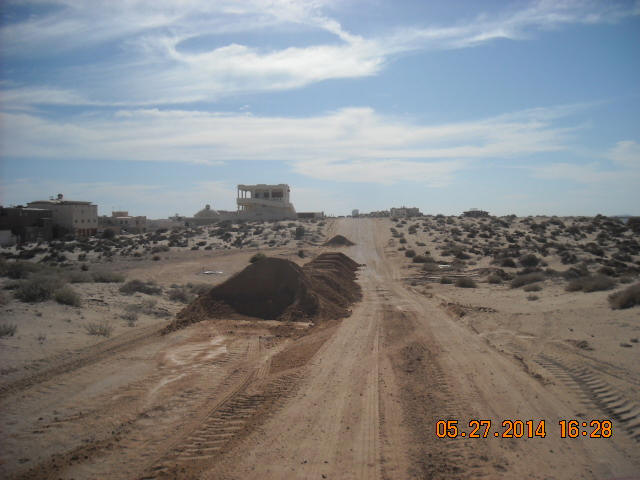
We graded tilted (crowned) the road so water will drain from
the road to the north.
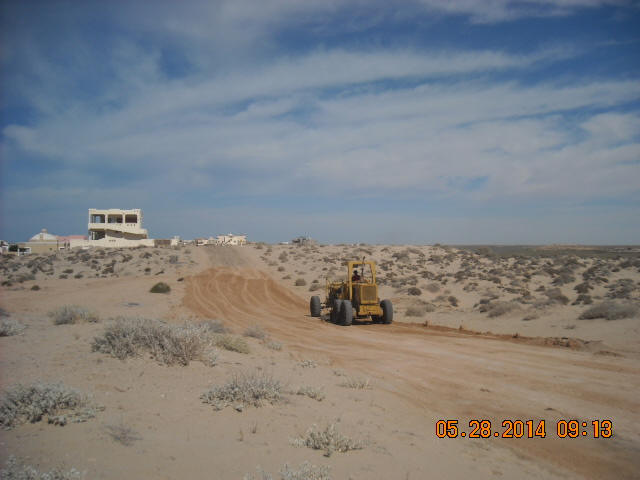
The test sections were then scarified to a depth of 5 to 6
inches. During the scarifying the perma-zyme was distributed
over the material (caliche) in three passes, with a mix rate of
1.5 gallons of perma-zyme to 3000 gallons of water. The grader
continually mixed the perma-zyme and the caliche.
East end of test area
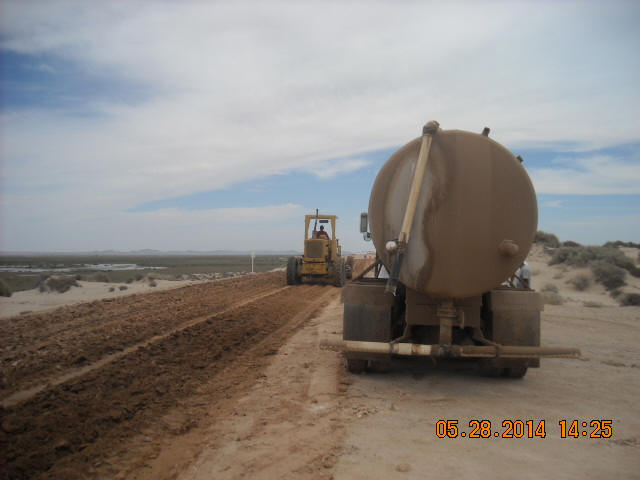 The grader then smoothed the caliche in lifts and crowned the road with a 6 inch drop from the center of the road to the edge. 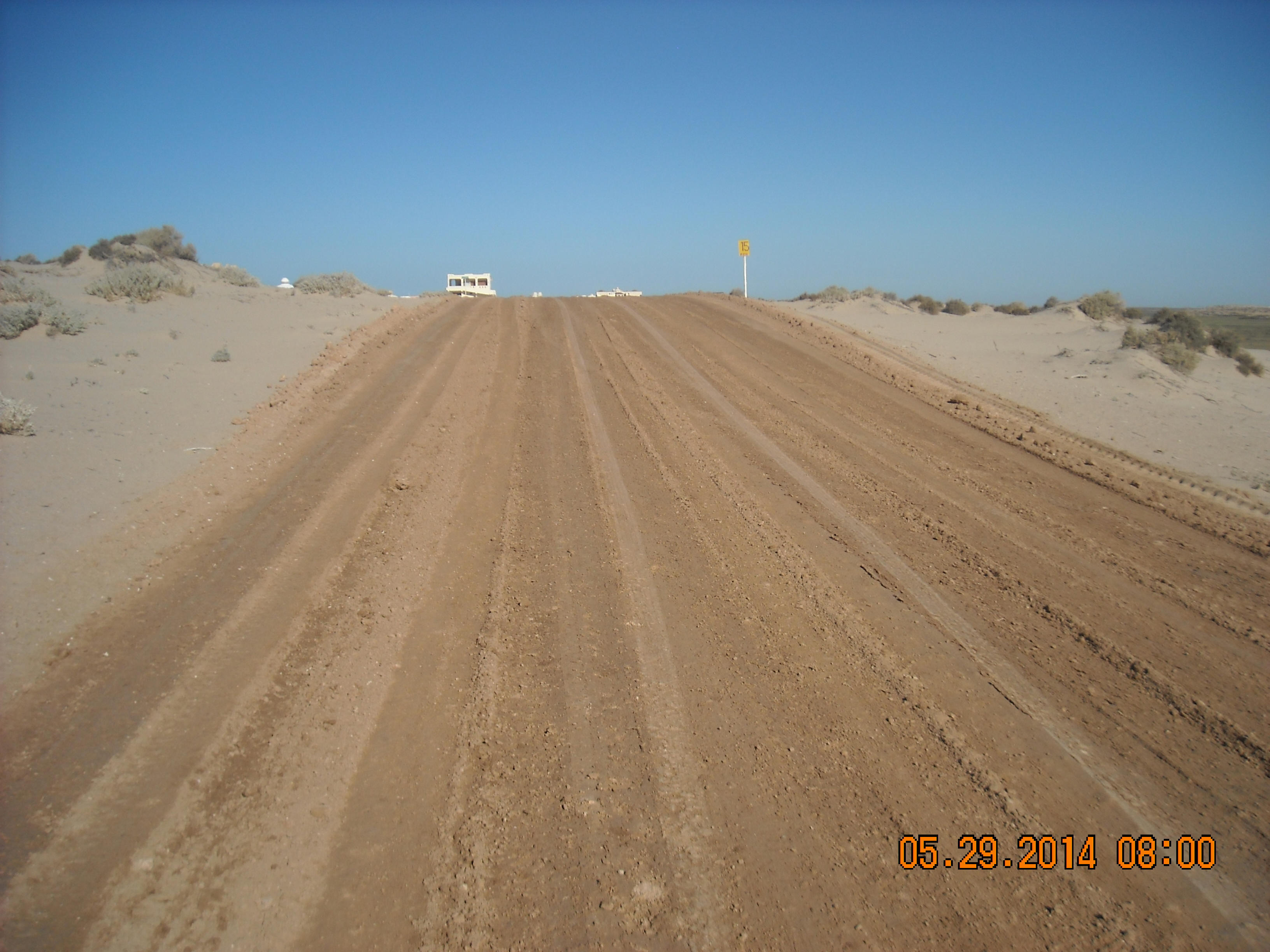
Next the compactor, compacts the caliche and smooths the
surface.
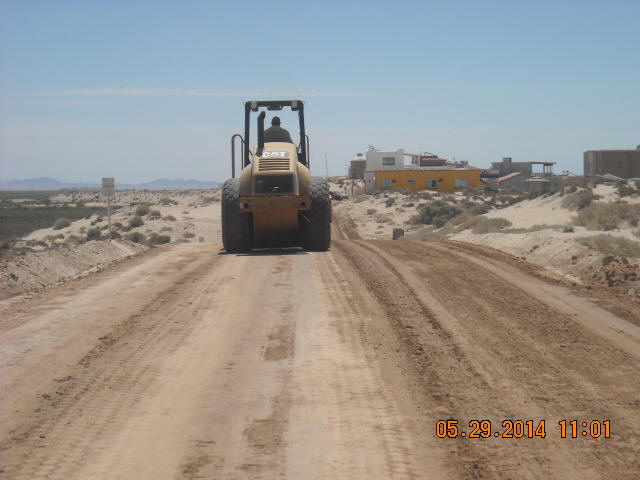
Finished road
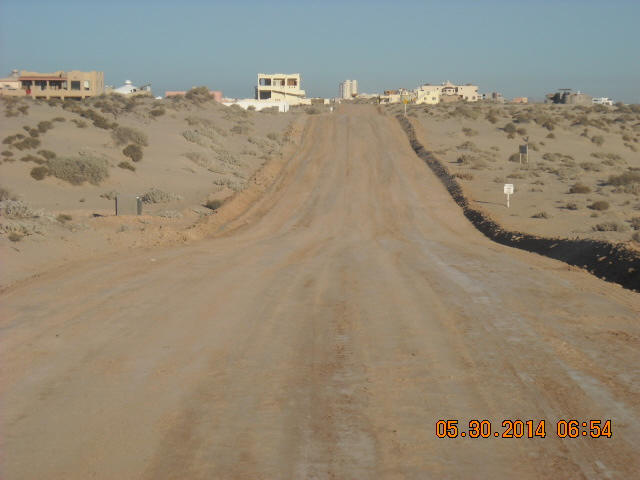
Thank you Dan Freeman on a great job done!
|